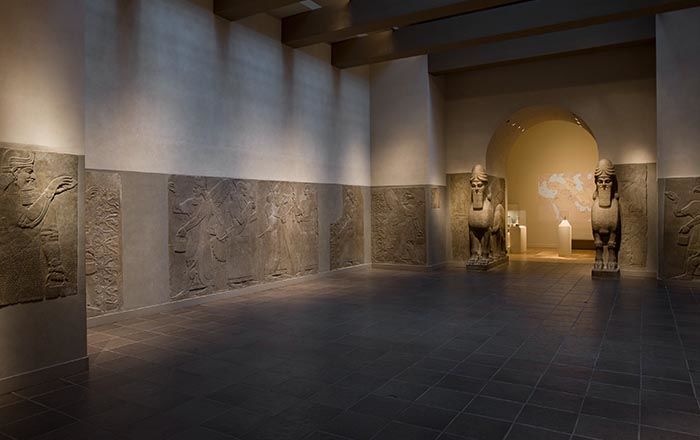Shell fragment
Not on view
Inscription in Luwian hieroglyphs: Urhilina, king
This object belongs to a group of at least fifteen whole and fragmentary cup-shaped shell objects found in a storeroom near the main audience hall at Fort Shalmaneser in Nimrud. All were inscribed in the Luwian language, used by the Hittite kings of the Late Bronze Age (1600-1200 B.C.) and their Iron Age descendants in eastern Turkey and northern Syria. Luwian was written in a hieroglyphic script, using stylized images to represent words and syllables. The inscription gives the name of Urhilina, king of the city-state of Hama who was defeated around 850 B.C. by the Assyrian king Shalmaneser III. The inscribed shells may have come to Nimrud at this time, as part of the booty carried off by the Assyrians from Hama. Their purpose is mysterious. Previously they were thought to be shield bosses or horse trappings, although their fittings do not seem secure enough for such uses. Another suggestion is that they are crotala, also called castanets or clappers, used as a rhythmic accompaniment by dancers. Texts record that the Assyrian kings deported members of conquered cities who possessed valuable skills, such as artisans, to the royal capital. Dancers from the court at Hama could have been among those sent to Nimrud.
This image cannot be enlarged, viewed at full screen, or downloaded.

